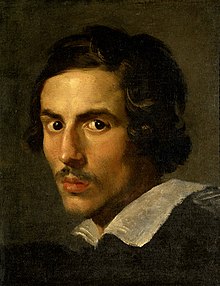 |
"A Pair of Angels
Gian Lorenzo Bernini |
The artist that will be focused on in todays blog is the famous sculpting mastermind Gian Lorenzo Bernini. In the article
"Three Proposals for Gian Lorenzo Bernini" by Ann Sutherland Harris talked about major pints that Lorenzo did when it came to the technique and preserving his sketches. Gian Lorenzo Bernini was born in 1598, the sixth of Angelica Galante and Pietro Bernini's thirteen children. Bernini grew up in Naples, where he began sculpting at a young age, working closely with his father. Stated in the article, "The study of the sketching youth and the two academies presented here hardly make a dent in the total of lost drawings by Bernini, but all three are powerful drawings and their recovery may lead to further finds in the still explored recesses ode European drawing cabinets" (Sutherland 126). Along with his colleagues, architect Francesco Borromini and painter and architect Pietro da Cortona, Bernini was a key player in the establishment of Roman Baroque architecture. Through an ambitious urban planning project undertaken under his sponsorship by the powerful Roman Popes of the period, his ideas helped restore Rome to her previous architectural splendor.
 |
| Gian Lorenzo Bernini |
Something that was stated in the reading and not in the journal article was that Bernini revolutionized the way sculptures were displayed. He frequently produced them "in the round," which refers to works that stand alone in large areas and are intended to be seen from all sides by the observer, boosting the total experience and intimacy with a piece. In the reading it stated, "Bernini gives the figure additional expressive power by his deep cuts in the stone, producing strong contrast between light and dark" (Cunningham 364). Although Bernini's drawings have gotten less aesthetic attention than his sculptures, there are a number of perceptive publications in a range of languages that combined give a comprehensive overview of his work in this medium. Stated in the article, "Scholars and and collectors of old master drawings focus on the survivors" (Sutherland 119). Study works for some of his sculptural or architectural contracts would have been some of his most accomplished sketch work. These big projects would need extensive preparation before beginning the final piece, and sketches may be drawn relatively rapidly to test a concept for a single aspect of the entire artwork.
Here is a short 5 minute video going more in depth on Bernini's own sculpture of "David":
The main reason why I had chosen the artist and article that I did was for the sole reason that I wanted to expand my knowledge on sculpting back during this particular era. Stated in the article, "The accented strokes defining the contour of the figure, with breaks that cause the eye to finish parts of the line, appear in both sheets as do dramatic blocks of empty paper and dark tones that model the forms with a bravura hard to find in the work of any other Italian siecento craftsman" (Sutherland 121). There are many creative ideologies when it came to creating a sketch for Berninil; Bernini was a playwright, director, and actor who was heavily influenced by the theatrical. He authored, directed, and acted in plays, particularly carnival satires. This penchant for drama impacted not just his architecture and sculpture, but also his designs for stage sets, theatrical technology, and a wide range of ornamental art objects. Gian Lorenzo Bernini was a major influence and revolutionized the sculpting scene during his era.
Work Cited
Riech. "Chapter 15: "The Baroque World" Culture and Values, by Lawrence S. Cunningham.
Harris, Ann Sutherland. “Three Proposals for Gian Lorenzo Bernini.” Master Drawings, vol. 41, no. 2, Master Drawings Association, 2003, pp. 119–27, http://www.jstor.org/stable/1554582.
Bernini, david - youtube. (n.d.). Retrieved November 30, 2021, from https://www.youtube.com/watch?v=0uEtvaUsI_w.



No comments:
Post a Comment